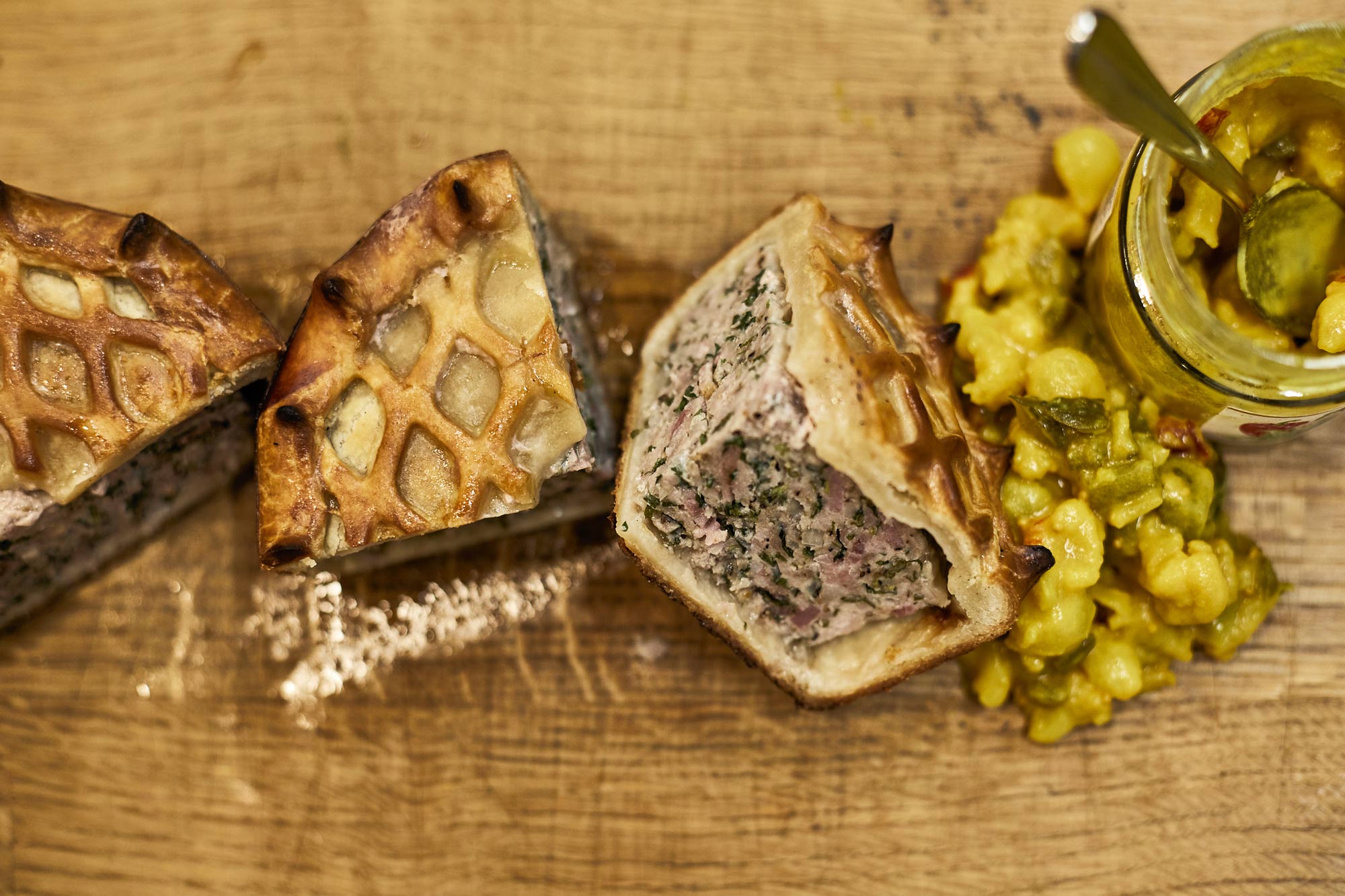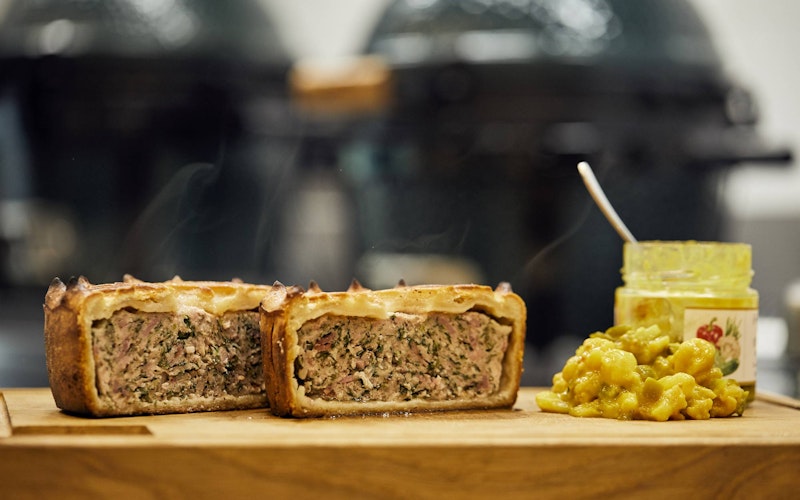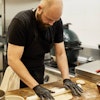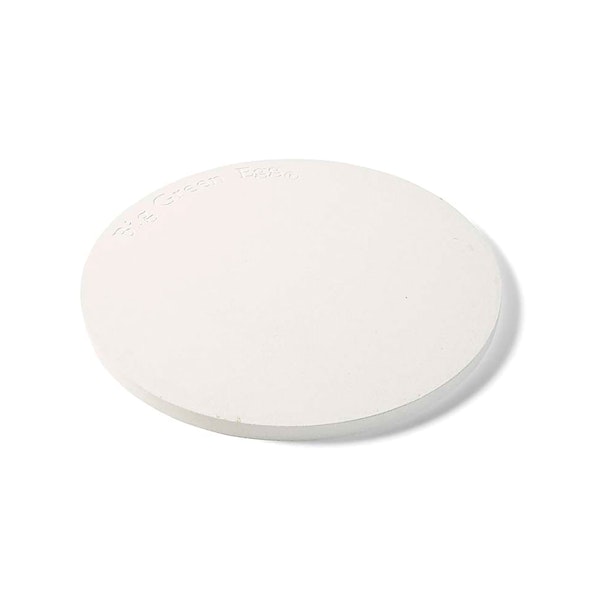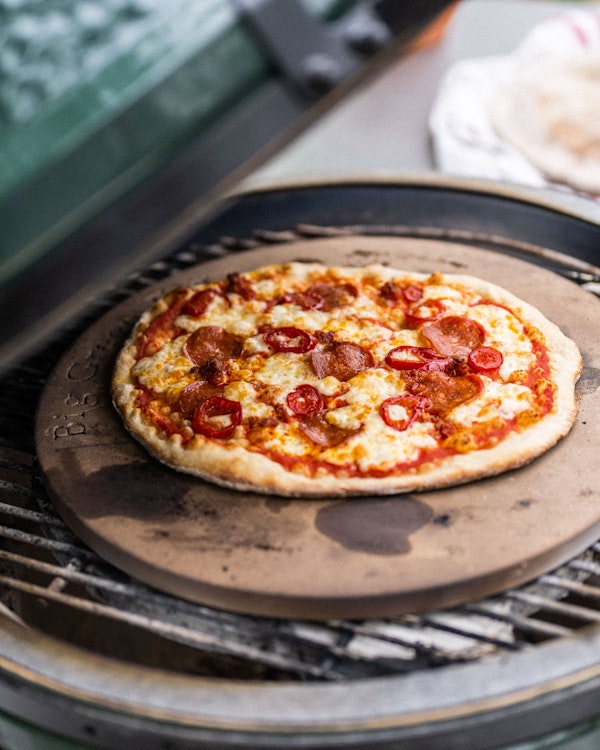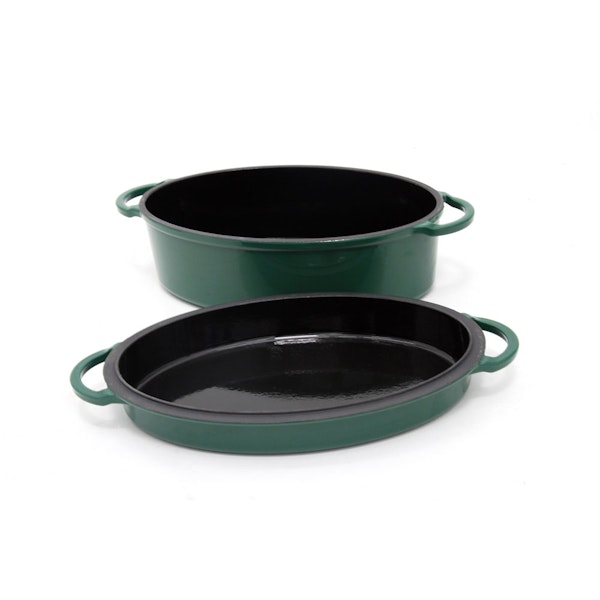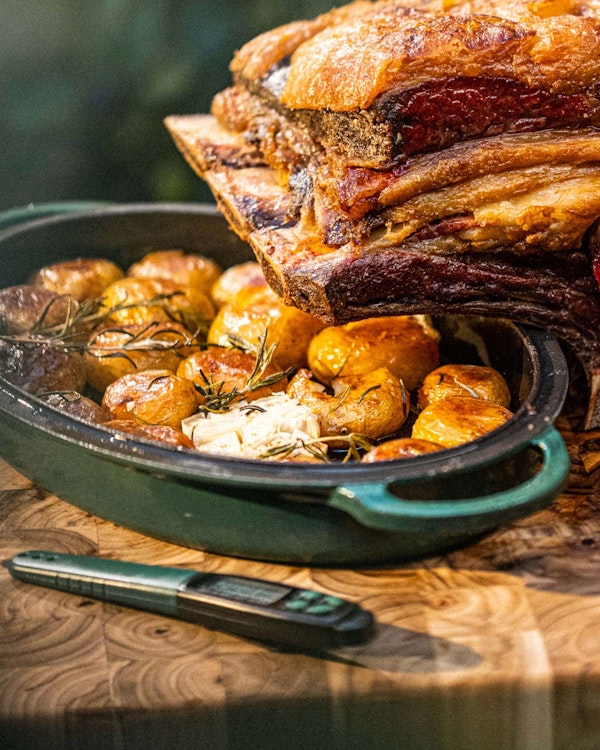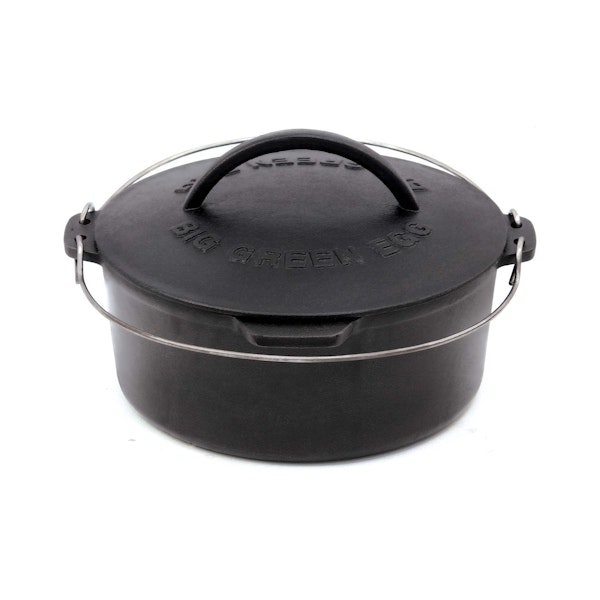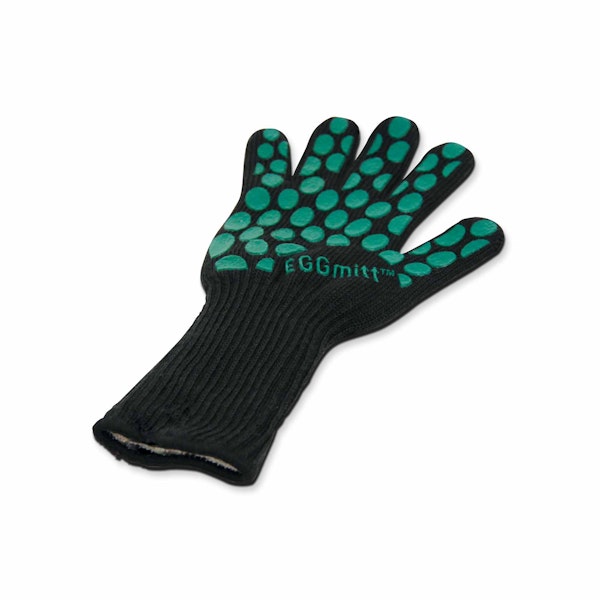OVERVIEW
A pork pie is a quintessential butcher’s shop offering, and with its crown-like latticed topping this is a pretty regal-looking version. I love it because it shows off another element of the Big Green Egg, highlighting how it can do things besides cooking a lump of meat – even something as delicate and technical as this pie.
Here, it’s served hot. If you want a traditional cold pork pie, leave it to cool overnight in the fridge. The following day, pour in a simple meat stock jelly, made with 500ml stock and 6 bronze gelatine leaves. Chill the pie in the fridge for a few hours more to set the jelly before slicing and serving.
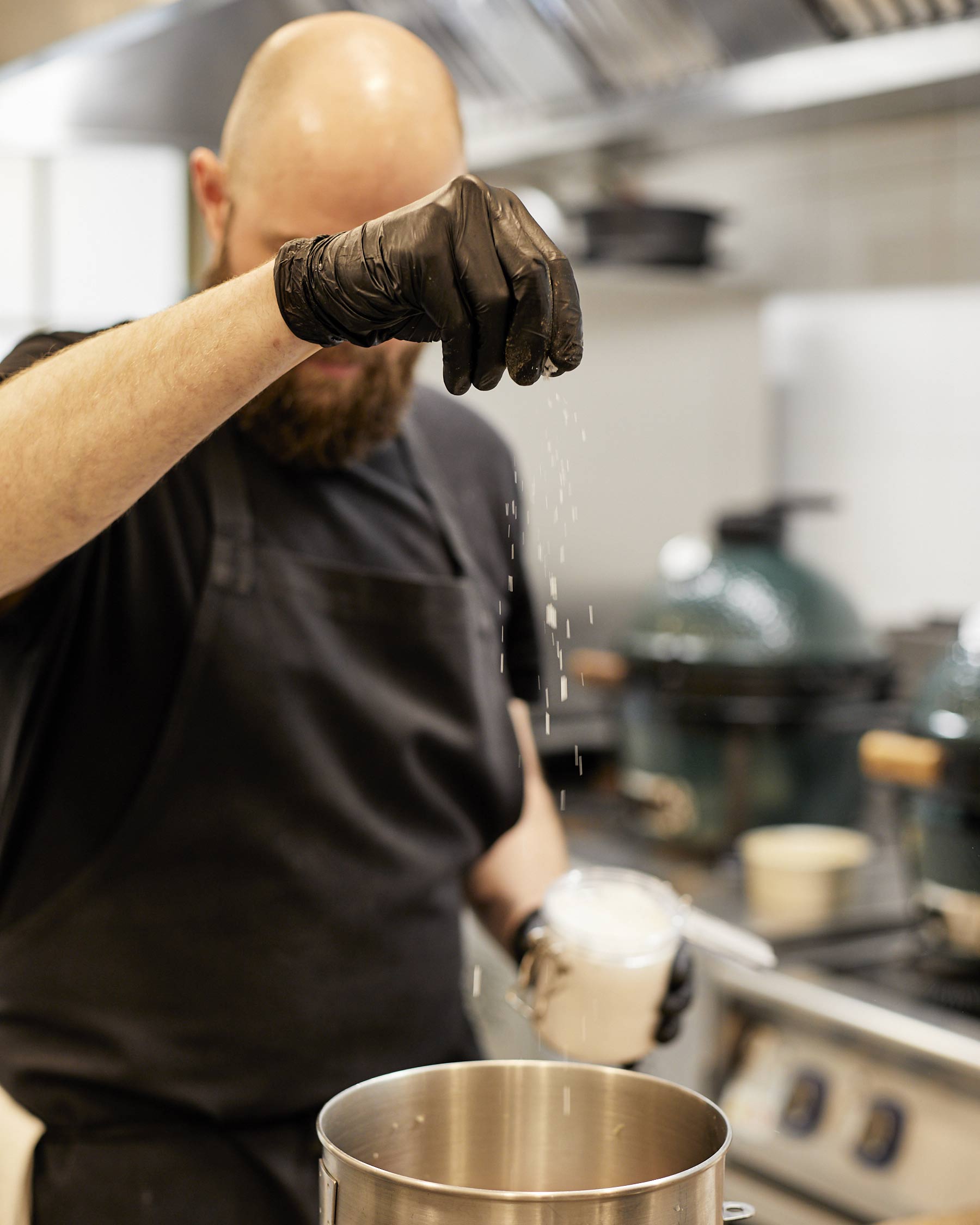
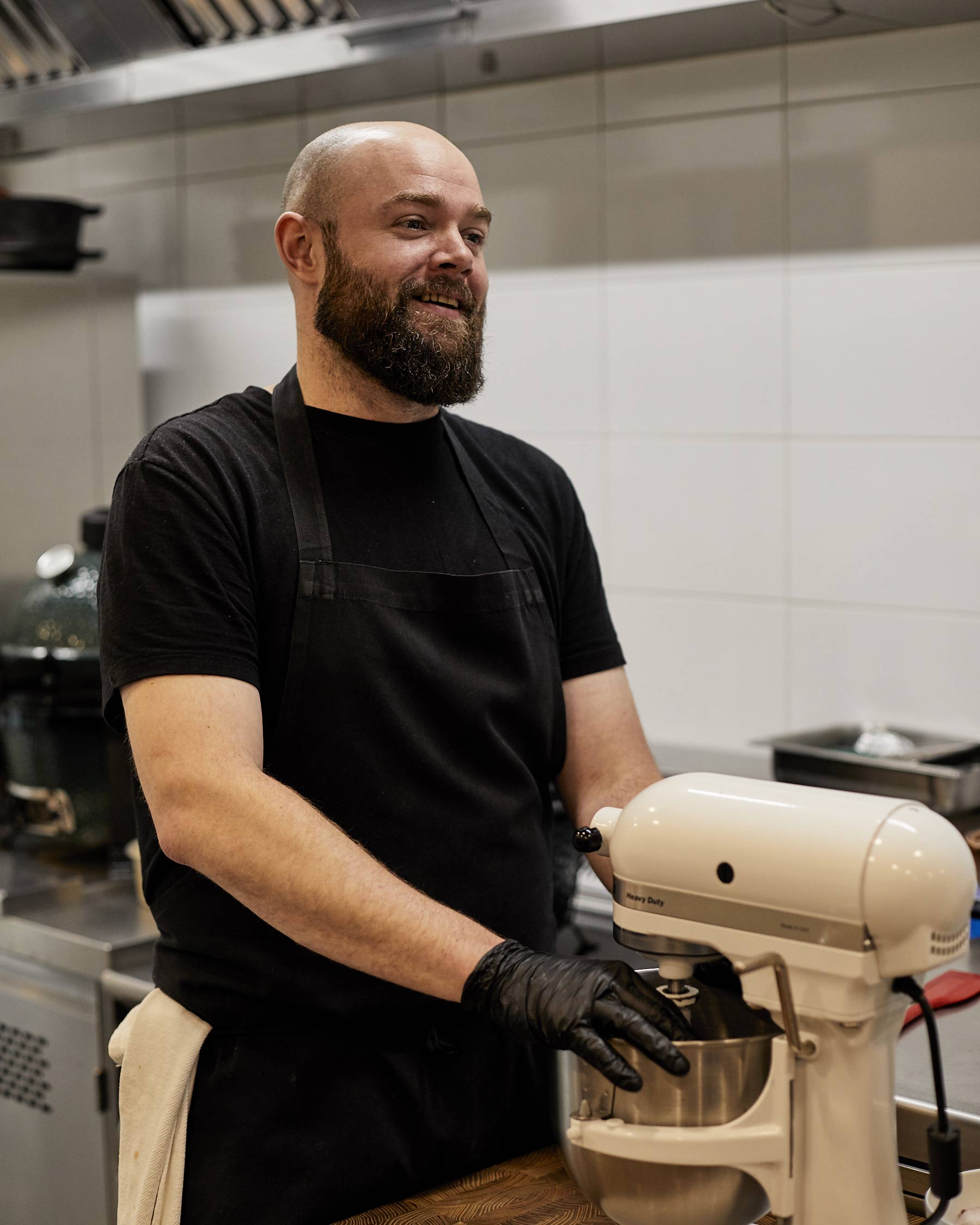
MAKE YOUR PASTRY
Place the dripping and sea salt in a small saucepan with 100ml cold water. Bring to the boil on a high heat. Once boiling, quickly remove the pan from the heat to avoid too much evaporation.
Fix the butterfly attachment to your stand mixer and add the flour to the bowl. Beat the egg and add it to the flour. Set the mixer to a low speed (level 2 on a KitchenAid). Carefully pour in the hot dripping and mix until all the flour has been incorporated.
Increase the speed for a few moments (level 6 on a KitchenAid). It’s important that you don’t overwork the dough – within just a few seconds, you should see the mix come together nicely and move away from the side of the mixing bowl. Once the dough is smooth and fully emulsified, cover the mixing bowl and leave to cool slightly.
Once cool enough to handle, separate out a quarter of the dough to make the lid and lattice. Roll both pieces into rough ball shapes and flatten slightly. Cover with cling film and chill in the fridge for a minimum 2 hours.
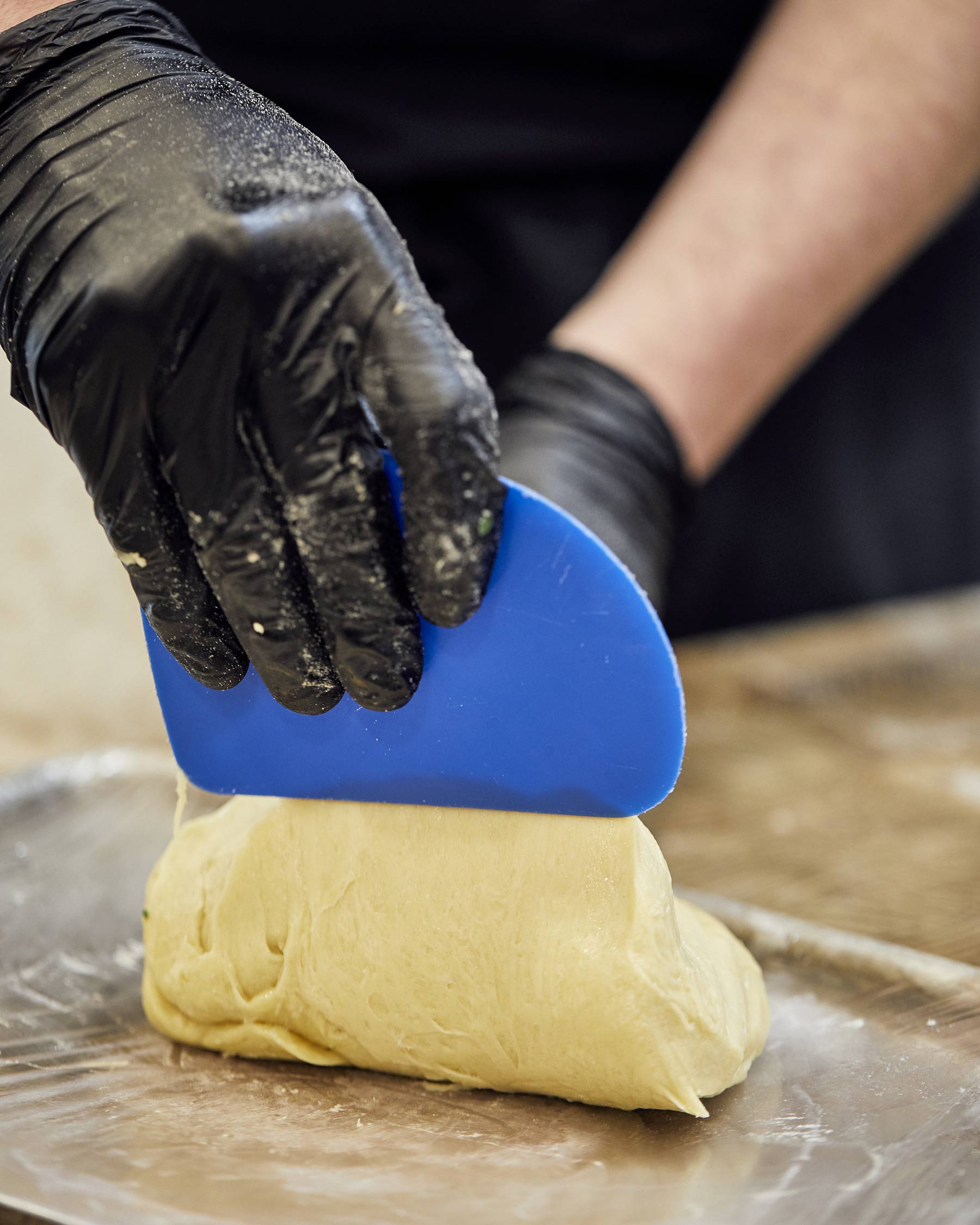
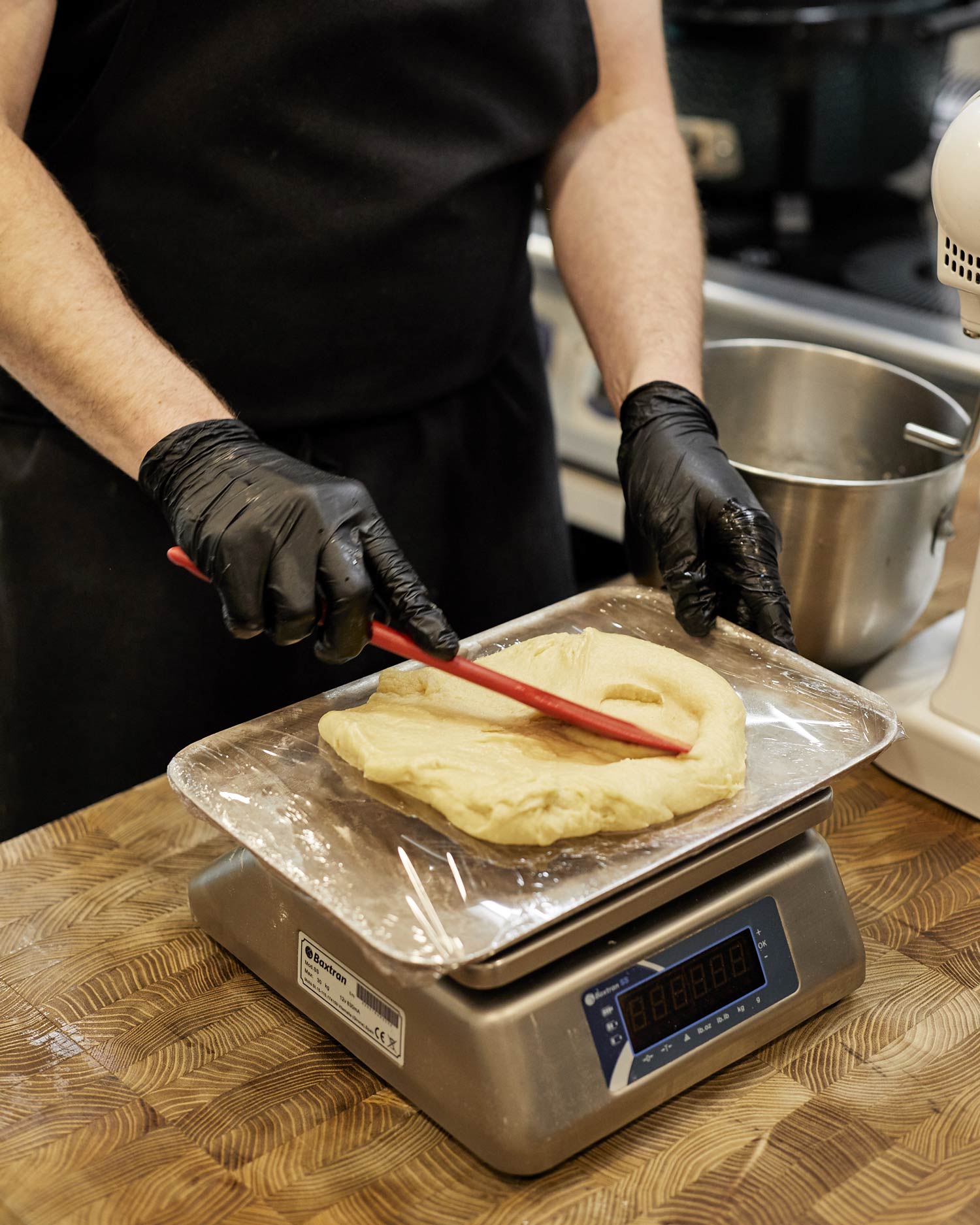
CONSTRUCT YOUR PIE
While the pastry is chilling, make the pie filling by mixing the pork mince, chopped bacon, garlic, shallot, chopped herbs and salt.
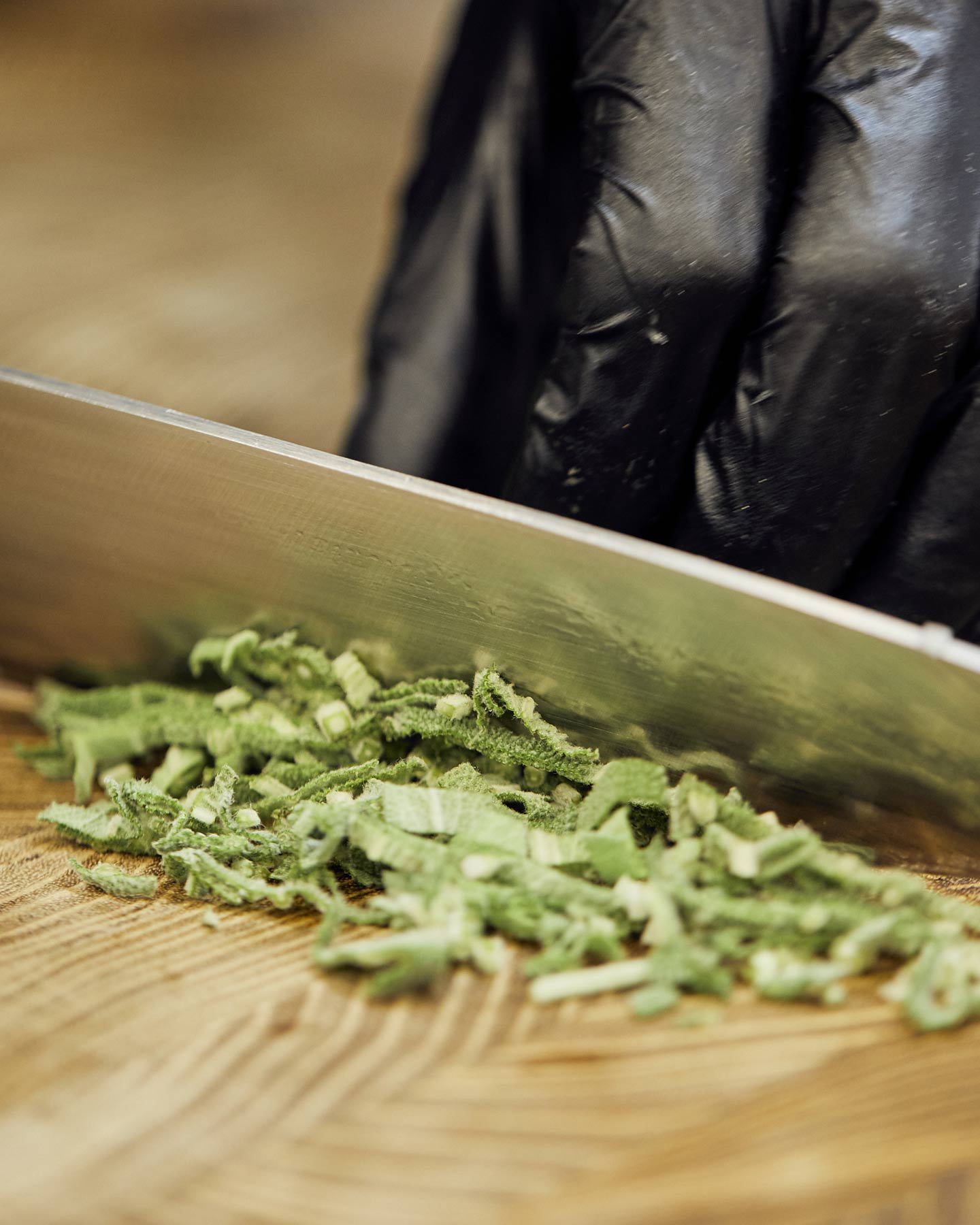
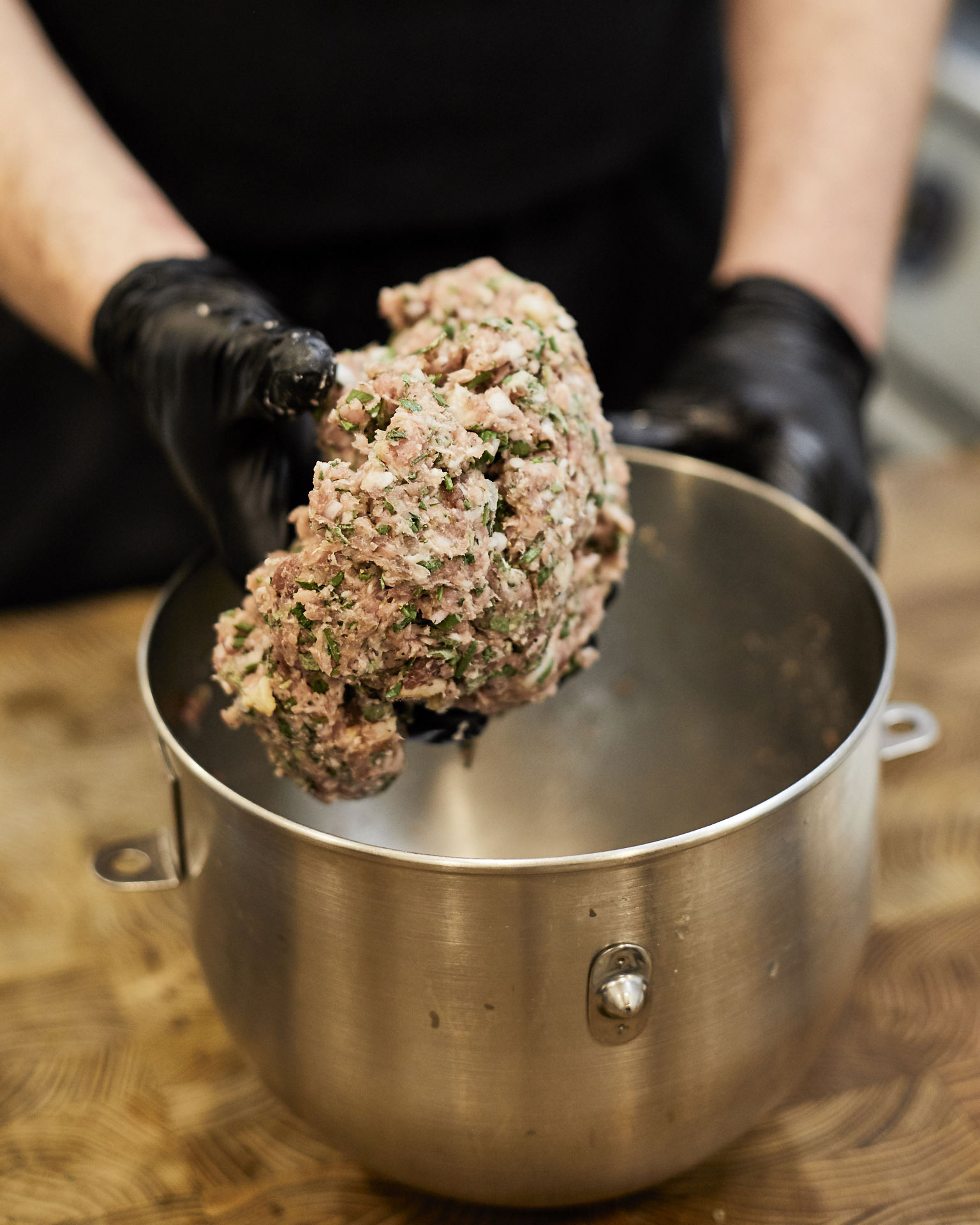
Lightly flour a work surface. Use the rolling pin to hit the dough a few times to ‘shock’ it – this will make it more malleable without heating too much. Roll the larger piece of pastry out until roughly 1cm thick and as round as possible.
Lightly oil the cake tin and line with the rolled pastry. Push the pastry firmly down into the tin, pinching the pastry and tin between you thumb and fingers all the way around.
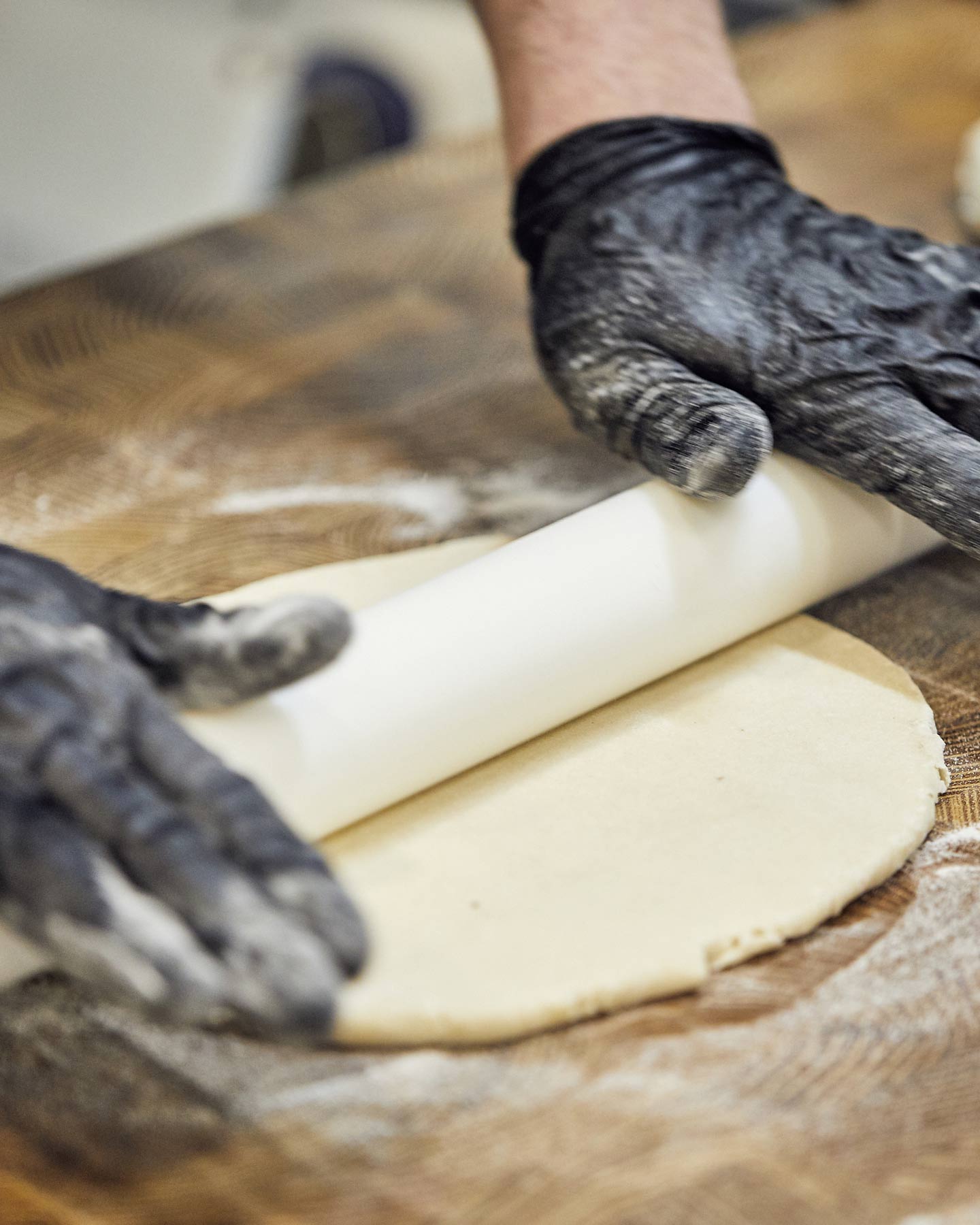
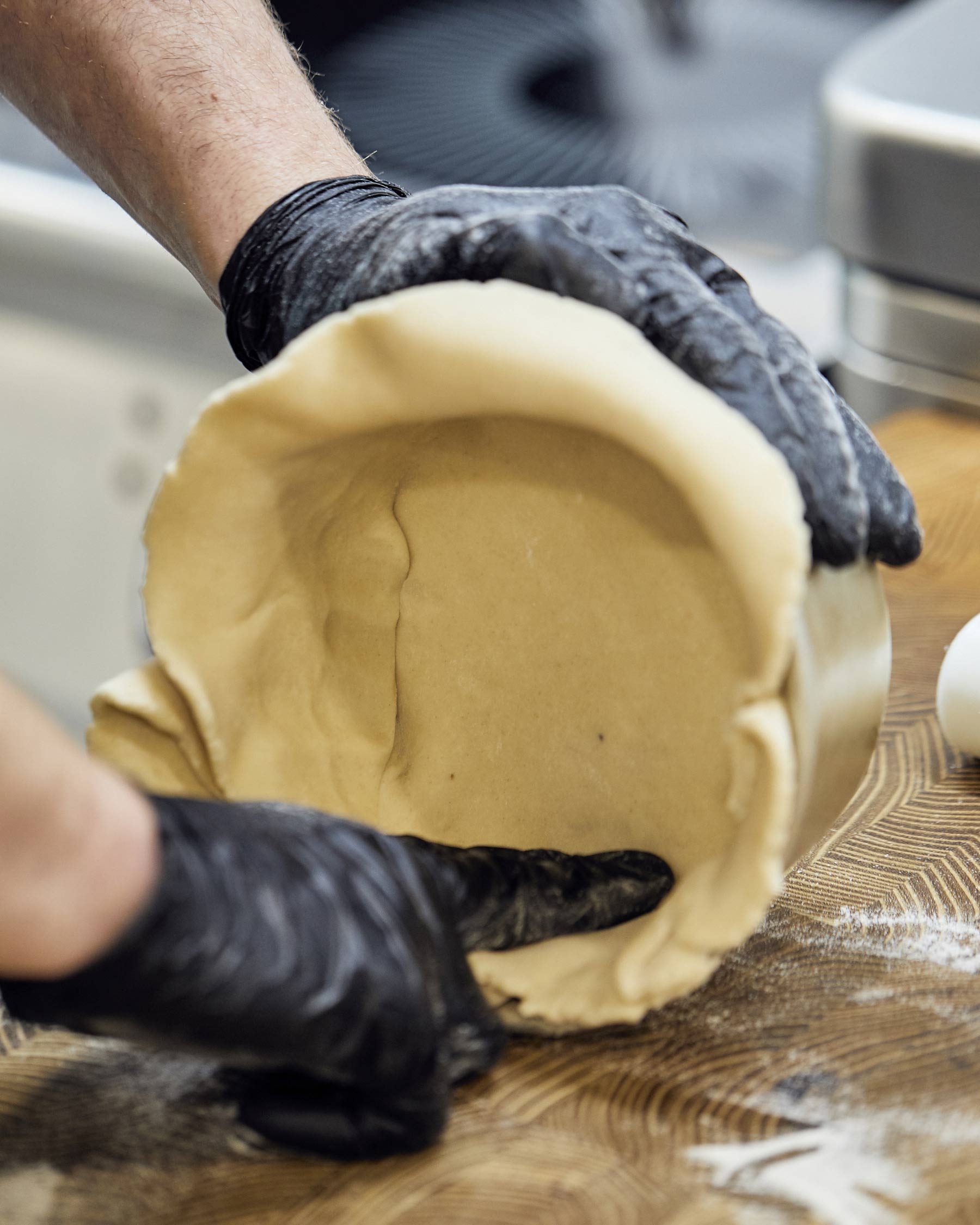
CREATE YOUR LID
Push your pork filling into the lined pie case. Make sure the filling is nice and flat, using the bottom of a glass if necessary. This should leave a clearance of about 1.5cm from the top of the pie.
Roll out the remaining piece of pastry to the same thickness.
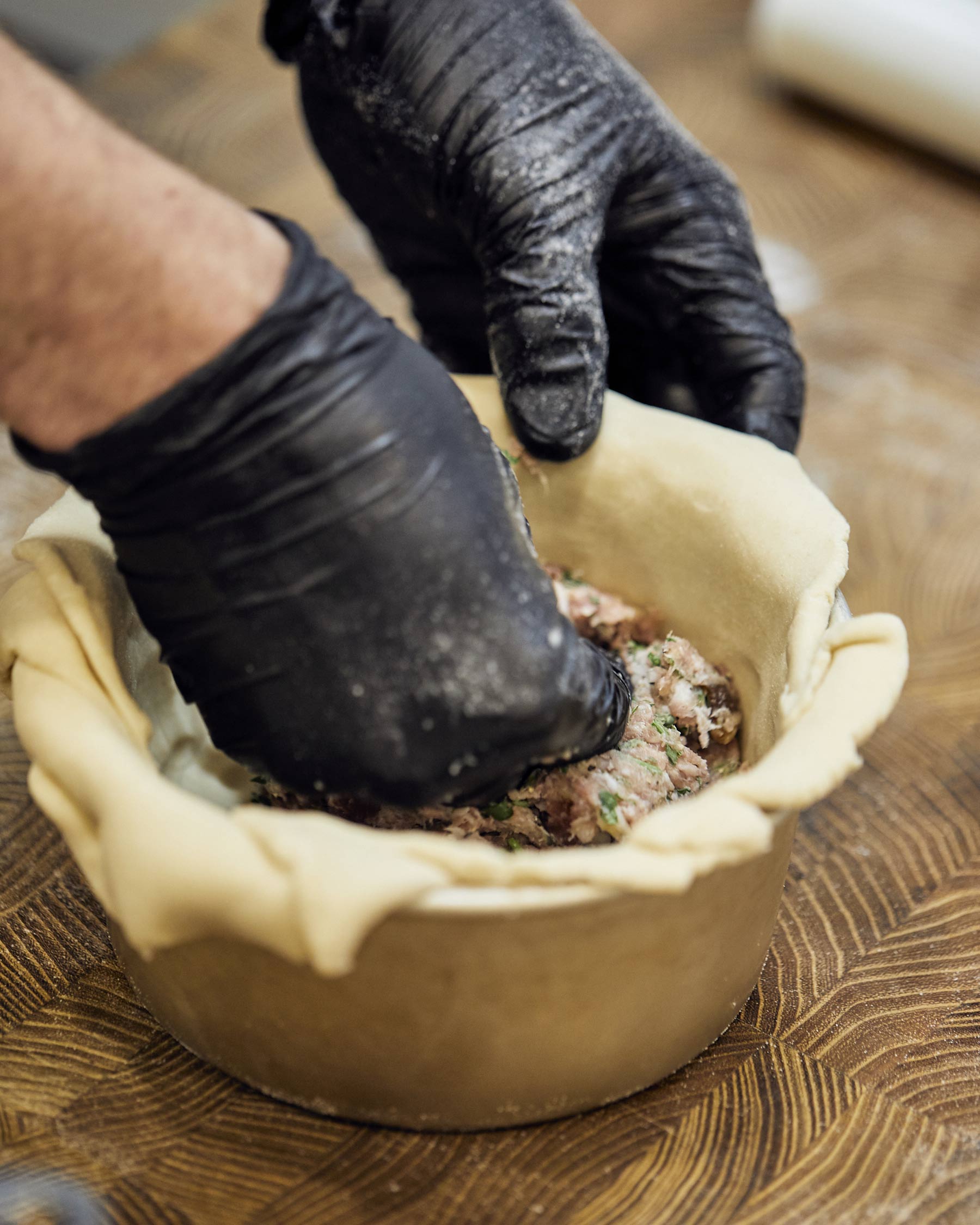
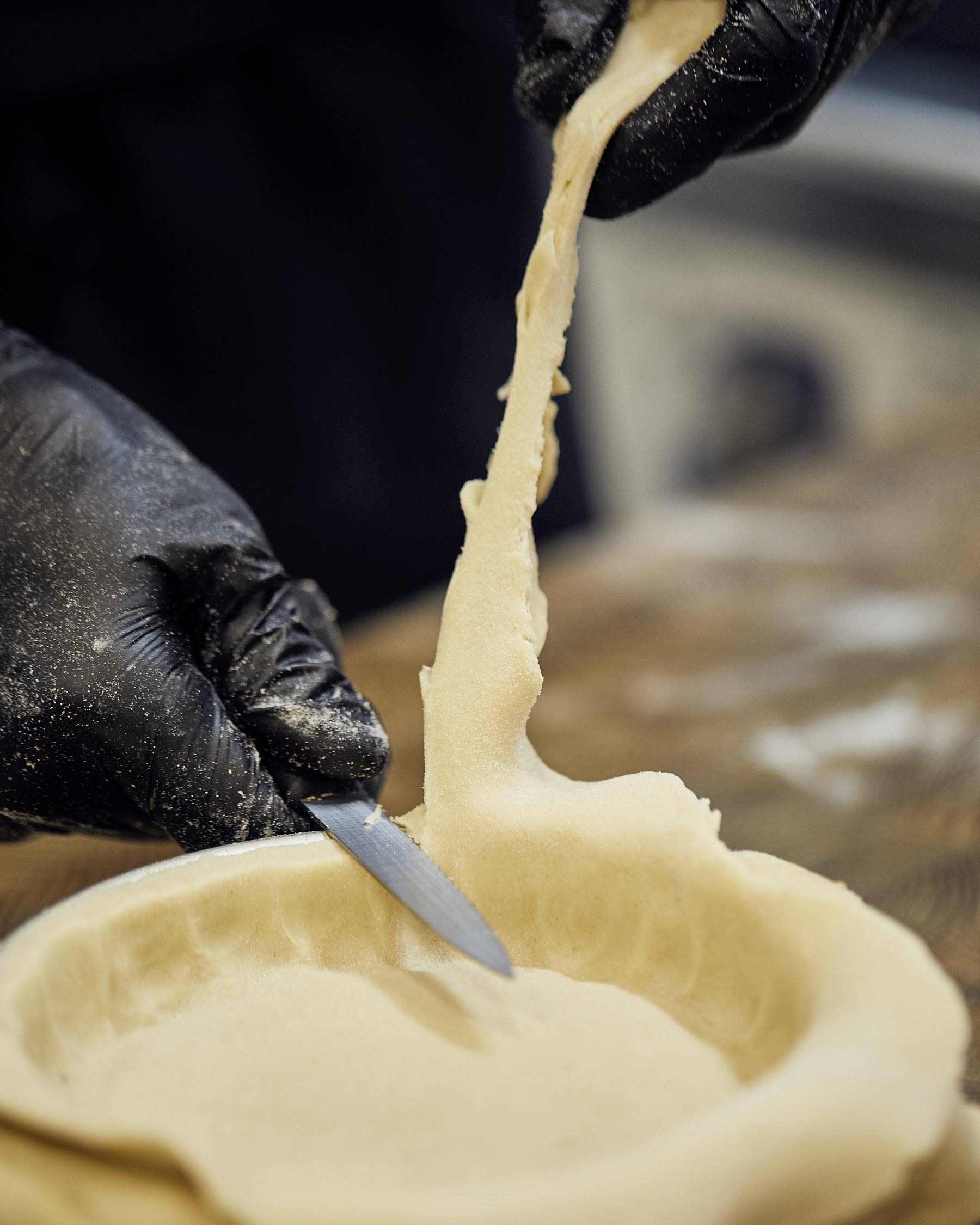
Beat the second egg and use it to wash the exposed pastry on the inside of the dish. Carefully top with the rolled lid, ensuring the pastry has full contact with the meat filling and there are no air bubbles.
Using your thumb and index finger, pinch together the two sheets of pasty, them trim off any excess, leaving the lid completely flush.
DECORATE YOUR PIE
Use the pastry trimmings to create a sheet of lattice (or any other decoration you choose to use). Simply work the trimmings back together into a ball, rest for 30 minutes, roll it out again, then make your decorations. Egg-wash the top of the pie to stick them in place.
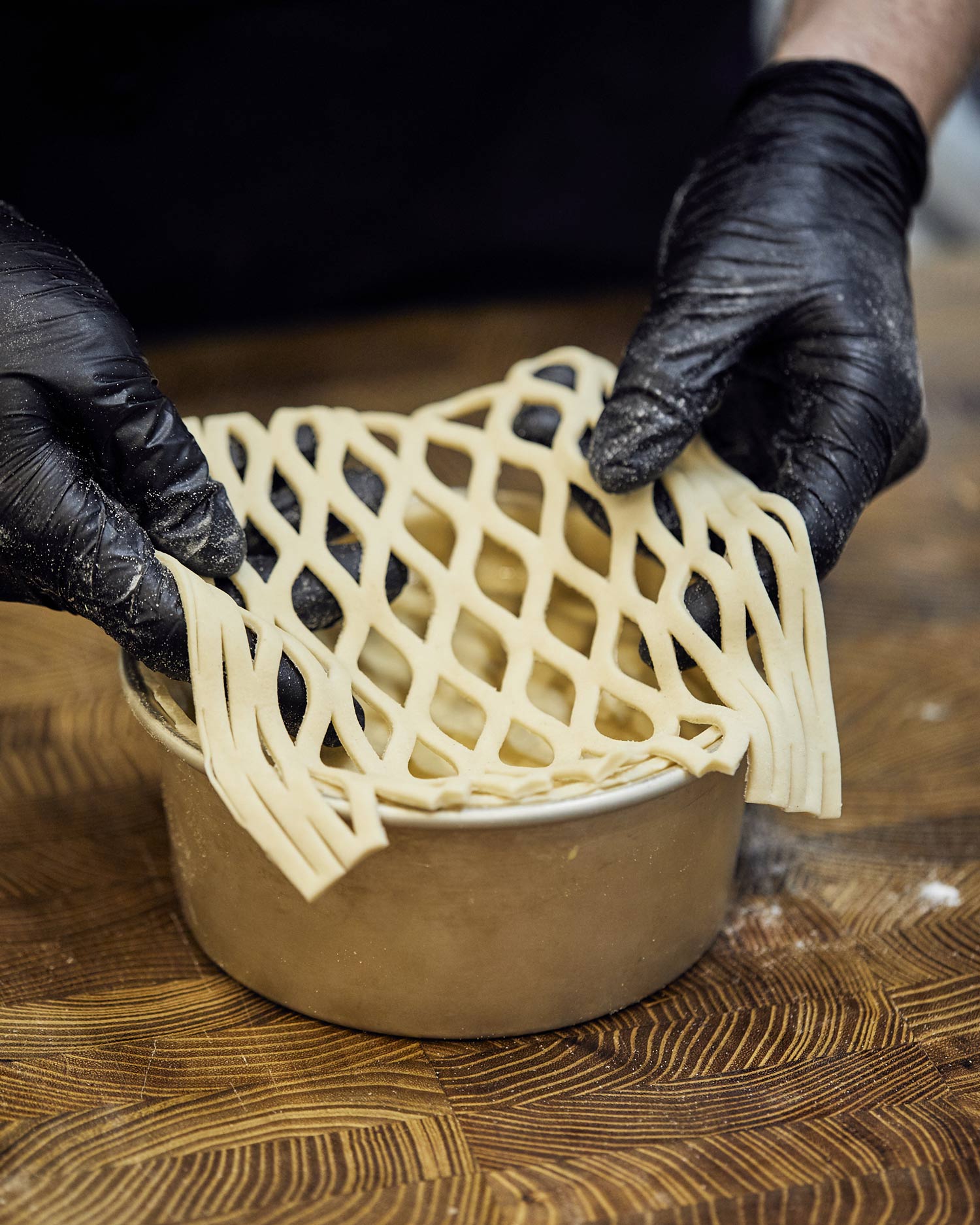
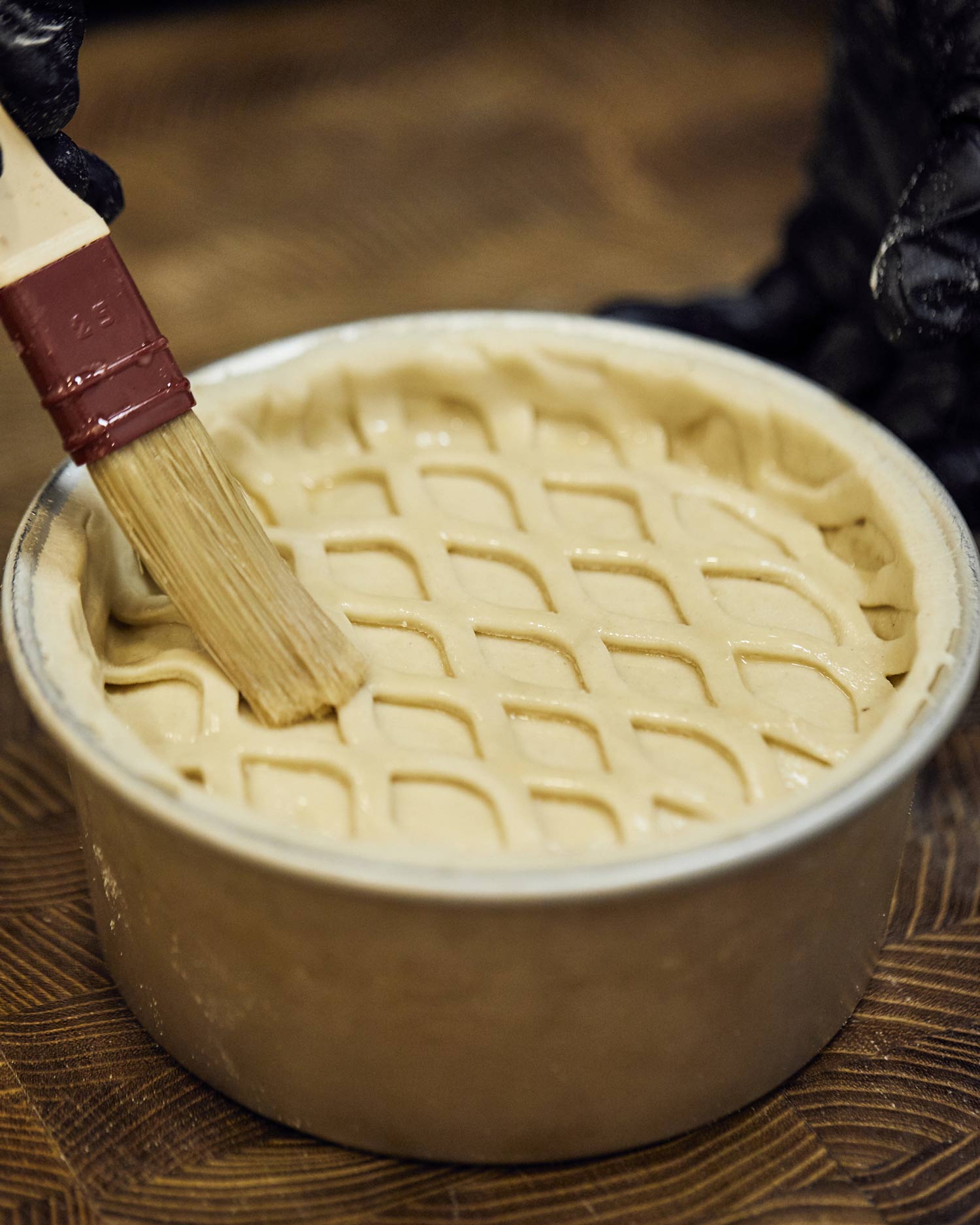
Give one final crimp to the edges of the pie to ensure it’s fully sealed. Rest in the fridge for 30 minutes before applying a second coat of egg wash.
Use a small ring cutter to cut a hole in the centre of the pie. This will allow steam to escape without breaking through the pastry.
SET UP YOUR EGG
Set up your EGG for indirect cooking with the ConvEGGtor in place, topped with a Stainless Steel Grid. Your target temperature is 230-250°C.
Place the pie in the middle of the grid and close the lid. Cook for 20-25 minutes until the pastry is golden brown on top.
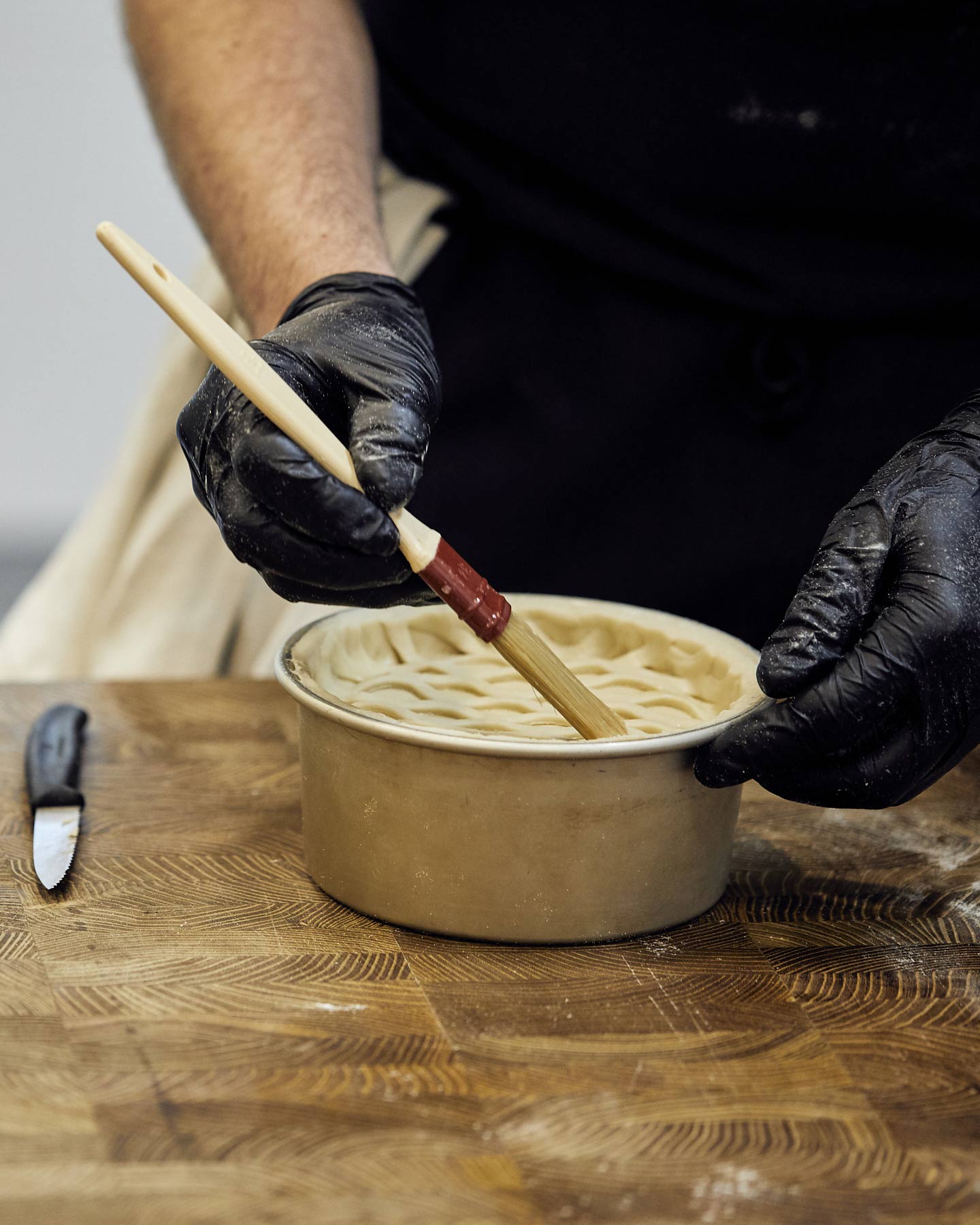
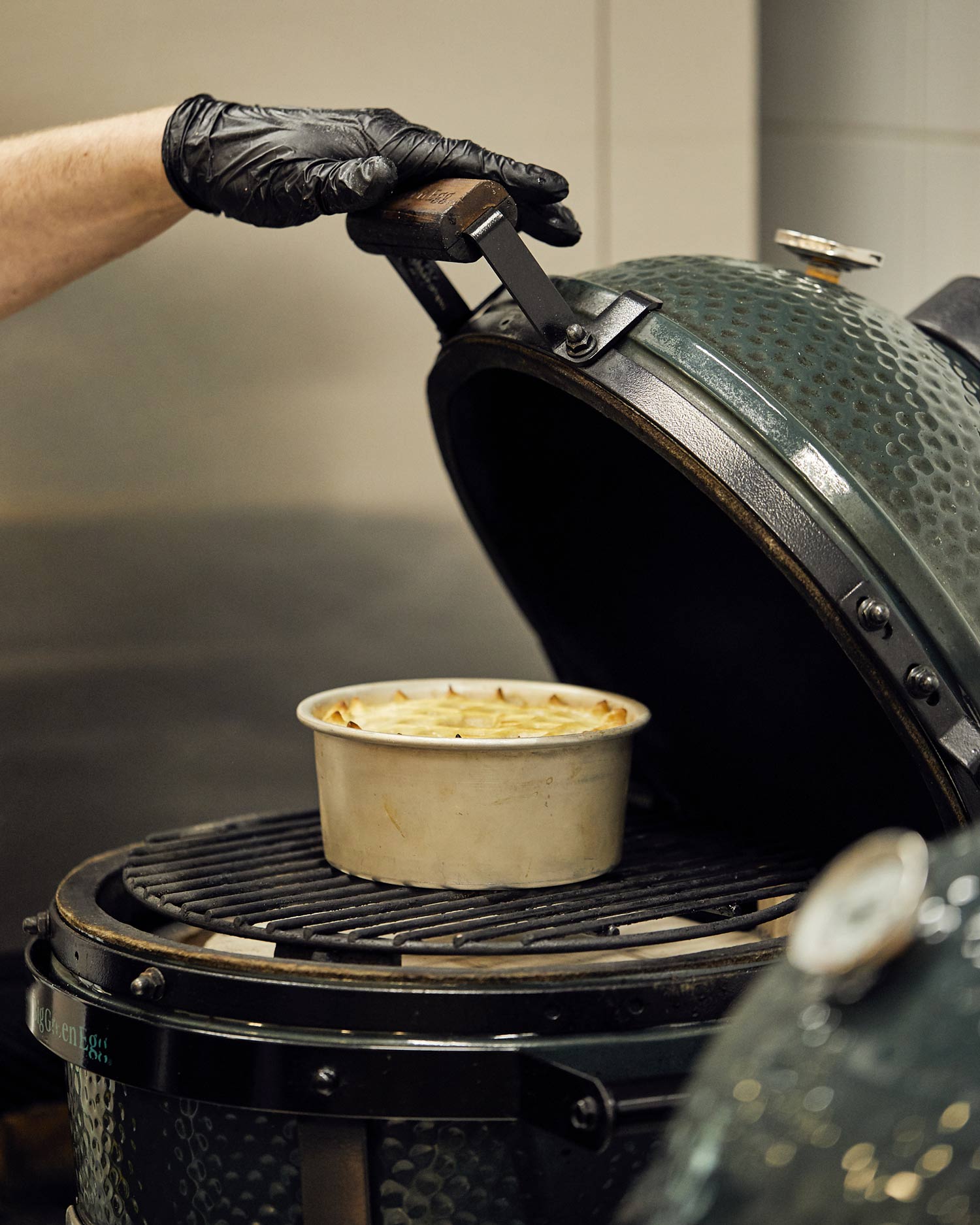
BRING DOWN THE HEAT
Remove the pie from the EGG and drop the temperature to 140-150°C. Place the pie back inside and continue cooking until the internal temperature reaches 60°C. The idea is to fully cook the pastry on a high heat, then let the gentler heat penetrate through and cook the filling. Cooking at the higher heat for the whole time would be too aggressive for the filling and would cause it to dry out.
Let the pie rest until the internal temperature reaches at least 65°C before serving.
